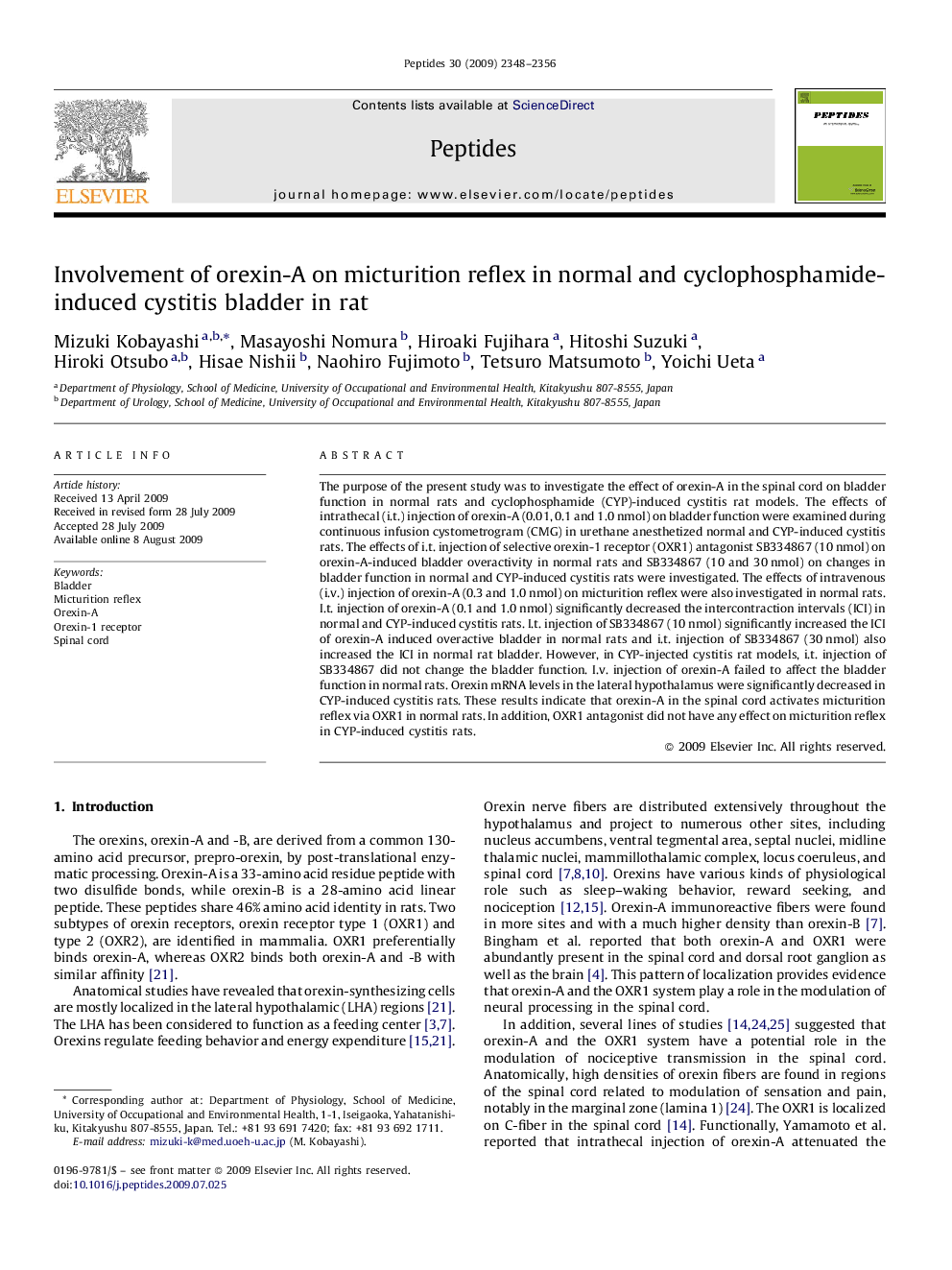| Article ID | Journal | Published Year | Pages | File Type |
|---|---|---|---|---|
| 2007063 | Peptides | 2009 | 9 Pages |
The purpose of the present study was to investigate the effect of orexin-A in the spinal cord on bladder function in normal rats and cyclophosphamide (CYP)-induced cystitis rat models. The effects of intrathecal (i.t.) injection of orexin-A (0.01, 0.1 and 1.0 nmol) on bladder function were examined during continuous infusion cystometrogram (CMG) in urethane anesthetized normal and CYP-induced cystitis rats. The effects of i.t. injection of selective orexin-1 receptor (OXR1) antagonist SB334867 (10 nmol) on orexin-A-induced bladder overactivity in normal rats and SB334867 (10 and 30 nmol) on changes in bladder function in normal and CYP-induced cystitis rats were investigated. The effects of intravenous (i.v.) injection of orexin-A (0.3 and 1.0 nmol) on micturition reflex were also investigated in normal rats. I.t. injection of orexin-A (0.1 and 1.0 nmol) significantly decreased the intercontraction intervals (ICI) in normal and CYP-induced cystitis rats. I.t. injection of SB334867 (10 nmol) significantly increased the ICI of orexin-A induced overactive bladder in normal rats and i.t. injection of SB334867 (30 nmol) also increased the ICI in normal rat bladder. However, in CYP-injected cystitis rat models, i.t. injection of SB334867 did not change the bladder function. I.v. injection of orexin-A failed to affect the bladder function in normal rats. Orexin mRNA levels in the lateral hypothalamus were significantly decreased in CYP-induced cystitis rats. These results indicate that orexin-A in the spinal cord activates micturition reflex via OXR1 in normal rats. In addition, OXR1 antagonist did not have any effect on micturition reflex in CYP-induced cystitis rats.
